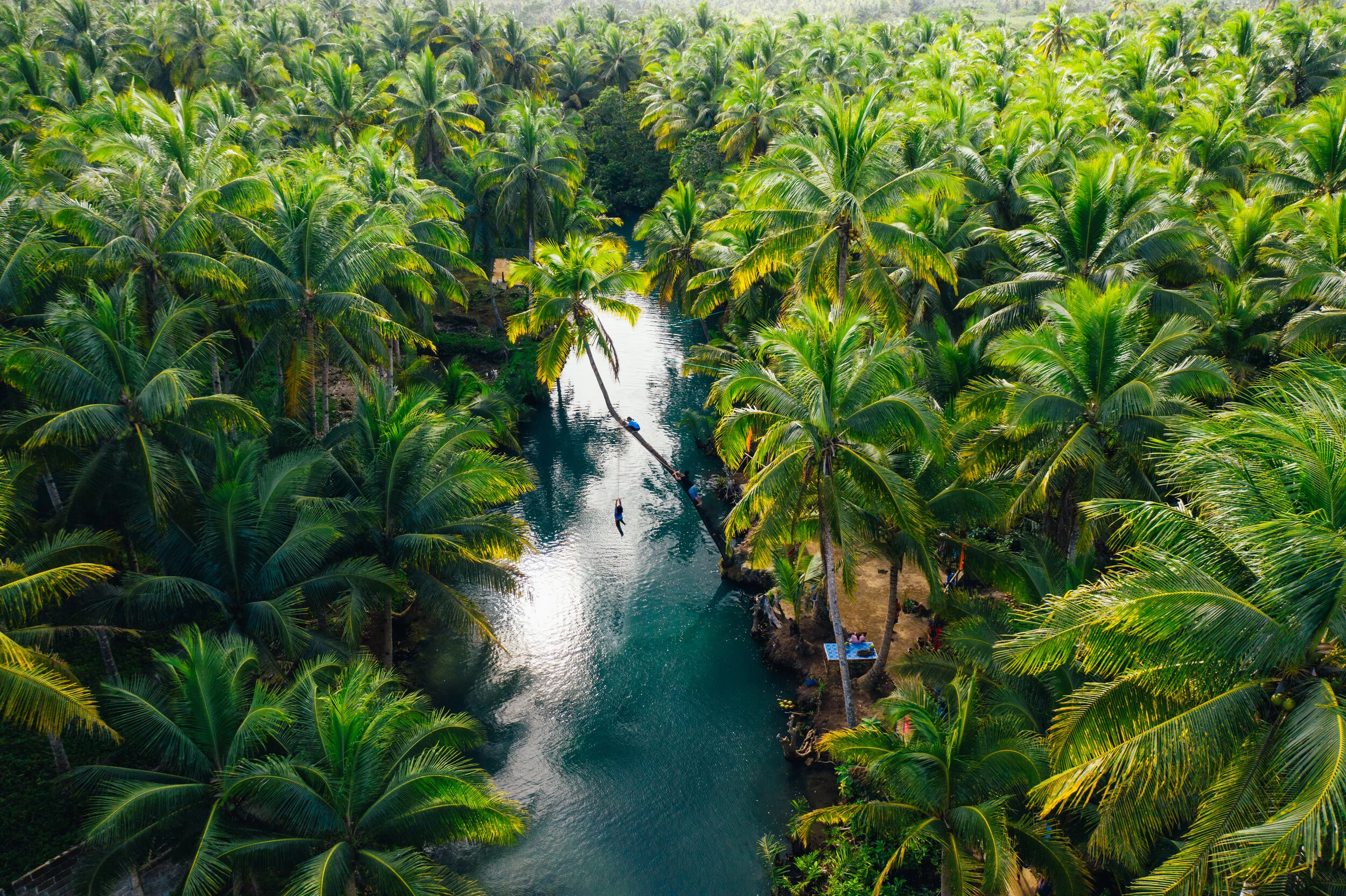In celebration of our coconut farmers, producers and plantations in the Philippines
It’s really worthwhile to stop and consider the origins of our food. Open a humble jar of organic coconut oil to start cooking, or squeeze a dollop of coconut nectar into your porridge, and do you really know what this product is and where it comes from? We can’t stop to think about every single thing that we buy and use day-in-day-out but it’s fascinating to look at the story behind the products, at least from time to time! And for anything coconut that means considering a bigger story: the story of coconut farmers, producers and plantations in the Philippines.
The integral relationship between coconut farming and the Philippines
In the Philippines, the coconut tree is known affectionately as the tree of life. It makes sense, given the crucial role that coconuts play in the country. Indeed, the Philippines is the second largest producer of coconuts globally, after Indonesia. They are actually the planet’s top producer and exporter of extra virgin coconut oil. That’s really quite incredible!
On the ground, wherever you look in the Philippines, you will see evidence of coconut farming and production. A staggering 3.6 million hectares of land are planted with coconuts – that’s a whopping 347 million coconut trees! Looking after these trees, and helping to ensure you get products such as coconut flour and coconut sugar – made from the meat and the sap of the coconut fruit and tree respectively – are an army of 2.5 million coconut farmers.
Coconuts do exceptionally well in the Philippines. Coconut trees thrive in the tropical climate where temperatures sit mostly around 24 – 29 °C. Coconut palms don’t like extreme variations in temperature, so the Philippines is perfect. There’s enough rain on a regular basis and the trees actually grow well in a variety of soil types. The climate here is, generally, very supportive of coconut farming.
It is not unsurprising therefore that coconut production is so vitally important for the Philippine economy, alongside the banana, rice and corn, in terms of Gross Value Added (GVA). Indeed, how coconuts are performing is generally considered to be a really good indicator and predictor of the country’s economic health. There’s even a government body – the Philippine Coconut Authority (PCA) – that is responsible for the coconut industry in the country and ensuring it becomes more competitive and efficient.
How are coconuts farmed in The Philippines?
Managing hundreds of millions of agricultural coconut trees obviously takes some organisation! In the Philippines most coconut production is organised into medium-sized farms. How these operate, and the terms and conditions for workers, varies enormously. For us here at The Coconut Company, it is important that we only support producers who work closely with farmers to ensure ethical and fair production.
This is where we can really see the human side of coconut production and realise how important the individual farmer is. At The Coconut Company our coconut products largely come from two key parts of the coconut palm. Firstly, there are products which come from the coconut itself such as coconut milk powder, coconut oil, and coconut flour. These use the white flesh of the coconut and hence retain a beautiful coconut taste. Then there are products which come from the palm, from the sap which comes from the flower. These products include coconut vinegars, coconut nectar, and coconut sugar.
To harvest and process the coconuts and harvest and process the sap take two very different methods. Indeed, a tree used for coconut sap harvesting won’t actually bear fruit whilst this process is happening. We’ve talked before about the beautiful story of coconut tapping which reveals how the farmers obtain the sap. What is remarkable with both types of product is how important the individual farmer is. Indeed, with things such as coconut nectar, often the individual farmer doesn’t just harvest the sap but also helps to produce the nectar by boiling the sap themselves. It is the collective efforts of the individual farmers which then enable the producers to deliver the volumes of coconut product that they do.
The politics of coconut farming in The Philippines
With the economic importance of coconuts being so evident, it’s no surprise that coconut farming and production ties in so closely to politics in the Philippines. Unfortunately, there’s been a bit of a tough time in this regard over recent decades. Indeed, coconut production stagnated between 2010 and 2017 and the PCA has been working hard to get production booming once more. The country exports about 70% of the coconut products it produces, so it’s really important that the sector is well supported politically and economically, especially as it is vulnerable to things such as typhoons and insect infestations.
In recent years there have been more endeavours to make coconut production in the Philippines more competitive to rejuvenate coconut production and increase exports, thus in turn helping to invigorate the economy. Various different policy makers and scientists are coming together to create change within the supply chains and the industry.
What’s important to us here at The Coconut Company is that our products remain exceptional and well-known for their fabulous taste and high quality, but that this comes on the back of our producers and farmers being supported and treated fairly. It matters to us that individual farmers involved in our coconut products work in safe and supportive conditions. That’s why we’re proud to know that our farmers receive fair pay but also receive benefits such as healthcare and education for their families.
The tale of each coconut product
There are real human producers behind each of the coconut products that we bring to you. We’re proud to help support the coconut trade in the Philippines and we’re looking forward to being able to bring you new and expanded product lines as the local economy continues to thrive once more.

